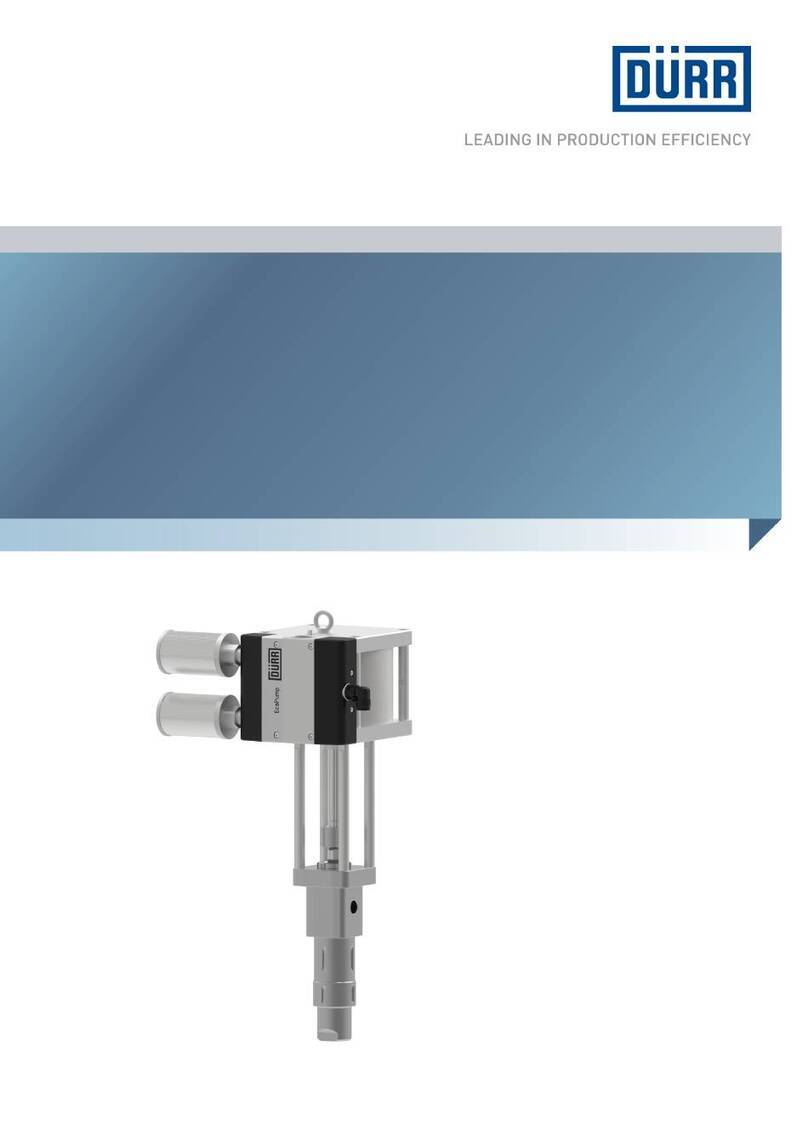
TABLE OF CONTENTS
1 Product overview...................................... 5
1.1 Overview............................................. 5
1.2 Short description................................. 5
2 Safety.......................................................... 5
2.1 Presentation of Notes.......................... 5
2.2 Intended Use....................................... 5
2.3 Residual risks...................................... 6
2.4 Conduct in the event of a hazardous
situation............................................... 7
2.5 Staff qualification................................. 7
2.6 Personal protective equipment............ 7
3 Design and Function................................. 8
3.1 System................................................ 8
3.2 Pumping.............................................. 8
3.3 Pneumatic maintenance unit for com-
pressed air preparation....................... 9
3.4 Suction module.................................... 9
3.5 Filter.................................................. 10
3.6 Distributor block................................. 10
3.7 Ball valve........................................... 10
3.8 Material pressure regulator................ 11
3.9 Transportation module....................... 11
4 Transport, scope of supply and
storage...................................................... 11
4.1 Scope of delivery............................... 11
4.2 Handling of packaging material......... 11
4.3 Storage.............................................. 11
4.4 Transport........................................... 12
5 Assembly................................................. 12
5.1 Requirements for the
Installation point................................ 12
5.2 Assembly........................................... 12
5.3 Connecting........................................ 13
5.4 Assembling ground conductor........... 14
6 Commissioning....................................... 15
6.1 Safety Instructions............................. 15
6.2 Commissioning.................................. 15
7 Operation................................................. 17
7.1 Safety recommendations................... 17
7.2 General notes.................................... 17
7.3 Switching on...................................... 18
7.4 Switching off...................................... 19
7.5 Rinsing.............................................. 20
8 Cleaning................................................... 21
8.1 Safety recommendations .................. 21
8.2 Cleaning............................................ 22
9 Maintenance............................................. 23
9.1 Safety recommendations................... 23
9.2 Maintenance schedule...................... 23
9.3 Replace filter of the maintenance
unit..................................................... 24
9.4 Replacing filter disk........................... 25
9.5 Replace filter cartridge...................... 25
9.6 Dismantling........................................ 26
9.7 Assembly........................................... 28
10 Faults........................................................ 30
10.1 Behavior during faults...................... 30
10.2 Defects table................................... 31
11 Disassembly and Disposal..................... 31
11.1 Safety recommendations................. 31
11.2 Disassembly.................................... 32
11.3 Disposal .......................................... 32
12 Technical data.......................................... 32
12.1 Dimensions and weight................... 32
12.2 Connections.................................... 33
12.3 Operating conditions....................... 33
12.4 Emissions........................................ 33
12.5 Operating values............................. 33
12.6 Compressed air quality.................... 33
12.7 Type plate........................................ 33
12.8 Operating and auxiliary materials.... 34
12.9 Materials used................................. 34
12.10 Material specification....................... 34
13 Replacement parts, tools and accesso-
ries............................................................ 34
13.1 Spare part........................................ 34
13.2 Tools................................................ 36
13.3 Accessories..................................... 36
13.4 Order............................................... 36
14 Index......................................................... 37
12/2019EcoPump AD Package - MPU00015EN4/40
































